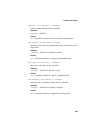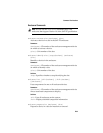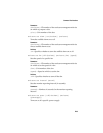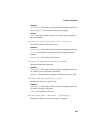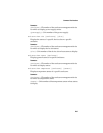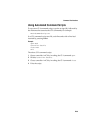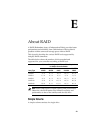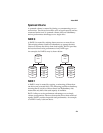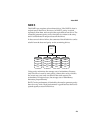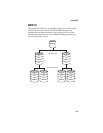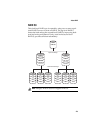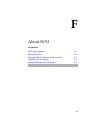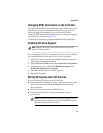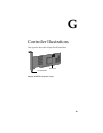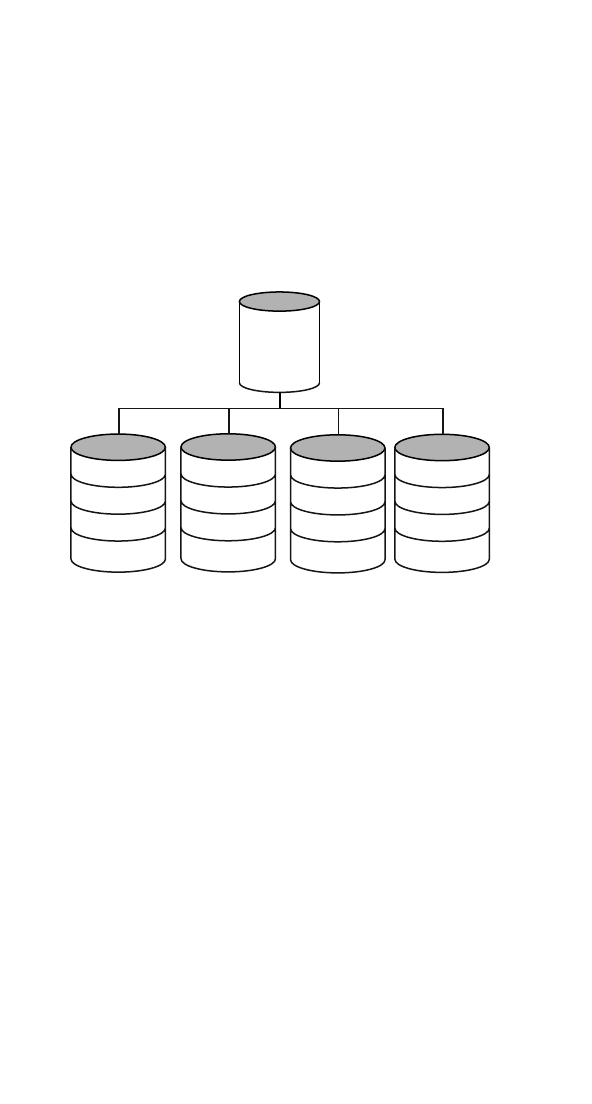
E-3
About RAID
RAID 5
This RAID type requires at least three drives. Like RAID 0, data is
striped across the drives. However, in RAID 5, parity is stored
separately from data, and occupies the equivalent of one drive. The
controller generates parity every time data is written to the array,
and it is distributed in stripes across all the drives.
In the event of a drive failure, the contents of the failed drive can be
rebuilt from the data and parity on the remaining drives.
Using parity minimizes the storage cost of redundancy. Because
only one drive is used to store parity, a three-drive array, which is
the worst case, uses only one-third of the total capacity for
redundancy. In larger arrays, the storage cost of redundancy
decreases proportionately
RAID 5 write performance is limited by the need to generate parity
data for every write. Read performance is good because the load is
spread equally across all the drives.
RAID 5
Data 3
Data 0
Parity 3
Data 6
Data 4
Data 1
Data 9
Parity 2
Parity 1
Data 2
Data 10
Data 7
Parity 0
Data 5
Data 11
Data 8
Drive
Drive Drive
Drive



